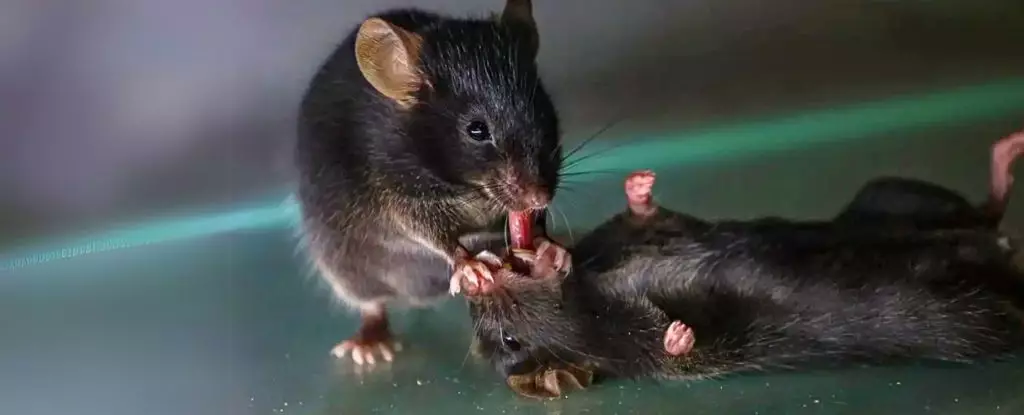Recent research has revealed intriguing insights into the innate helping behaviors of mice, suggesting that empathy and the instinct to assist others in distress may be more deeply rooted in mammalian evolution than previously understood. A study conducted by a team from the University of Southern California has uncovered fascinating evidence that “bystander” mice actively engage in attempts to revive their unconscious companions. This behavior not only highlights the complex social interactions of these small creatures but also opens a broader inquiry into the evolution of altruistic behaviors across species.
The scientists observed that when faced with incapacitated peers—whether they were dead, unconscious, or merely immobile—the conscious mice exhibited a remarkable response. Rather than merely poking or nudging their companions, these mice employed a physical technique reminiscent of first aid. This involved pulling the tongue of incapacitated peers, a behavior that, while peculiar, served a critical function: enhancing airflow and facilitating recovery. This seemingly instinctual act poses profound questions about animal cognition and emotional processing; are these actions driven by instinct, or do the mice possess a form of awareness regarding the plight of their companions?
Despite the inherent differences between rodent and human first aid, the parallels in behavior cannot be overlooked. Mice demonstrate significant initiative in aiding others, a behavior that may not only signify a desire for social bonding but also an intrinsic understanding of urgency in such circumstances.
Neurological Insights: The Brain’s Role in Altruism
From a neurological perspective, this study provides insights into the underlying brain mechanisms that spur these behaviors. Researchers identified significant activity in brain regions associated with involuntary functions and emotional responses when the bystander mice attempted their rescue efforts. Enhancements in hormonal signaling, particularly concerning oxytocin—the “bonding hormone”—were also noted. This is particularly compelling, as oxytocin has long been associated with social behaviors and bonding in various species, including humans.
Moreover, striking patterns of neural activation were observed in the medial amygdala, a region linked to the processing of emotional stimuli. The activation here contrasts with the brain activity seen when a mouse interacts with a stressed companion, indicating that the caregiving behavior displayed during rescues is a distinct circuit of emotional response.
One of the most interesting findings from this research relates to the familiar versus unfamiliar dynamics among the mice. The study showed that conscious mice were significantly more likely to attempt resuscitation on known companions rather than on strangers. This indicates a level of social awareness and a preference for familiar relationships that goes beyond mere instinct. Neuroscientist James Burkett highlighted that such a familiarity bias implies a more sophisticated social understanding among the mice, underscoring their ability to assess individual identity and adapt their actions appropriately.
Interestingly, the reactions of the caring mice included a series of behaviors—starting with sniffing and grooming before progressing to the more intense action of tongue pulling. This hints that the resuscitation efforts are not random or purely reflexive but rather a series of calculated responses reflective of social bond dynamics and interaction history.
The implications of these findings stretch beyond the realm of rodent behavior and into broader contexts concerning the evolution of social behaviors in mammals. The documented altruistic tendencies in larger mammals like elephants and dolphins have long suggested that caring for others may be a fundamental aspect of social mammal behavior. The discovery of similar behaviors in mice, a species typically viewed as simple and instinct-driven, challenges preconceived notions about the cognitive abilities of smaller mammals and invites further exploration into the universality of empathy across species.
As we delve deeper into these behaviors, it becomes evident that the innate desire to help others may be a fundamental aspect of life across numerous species. Notwithstanding the peculiarities of rodent “first aid,” the findings shed light on the social and emotional complexities that animals navigate daily. The study not only enriches our understanding of mouse behaviors but also serves as a stepping stone towards exploring the depths of animal empathy, social interactions, and ultimately, our own human behaviors rooted in millions of years of evolution.


Leave a Reply